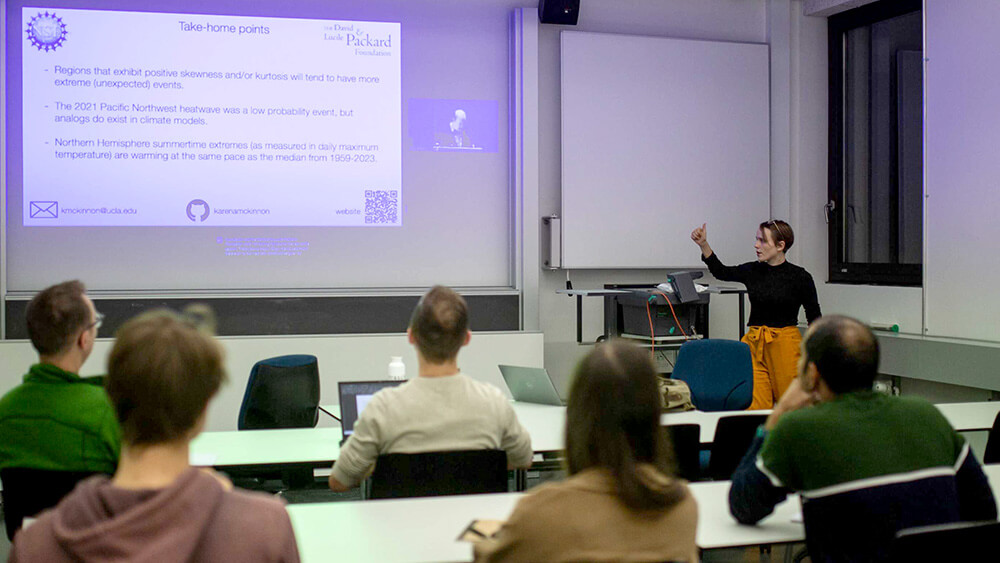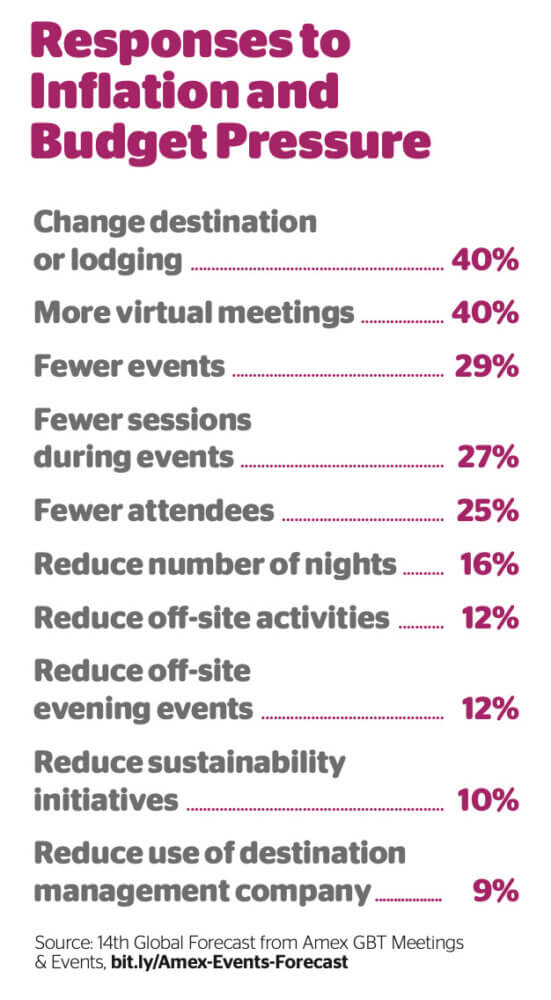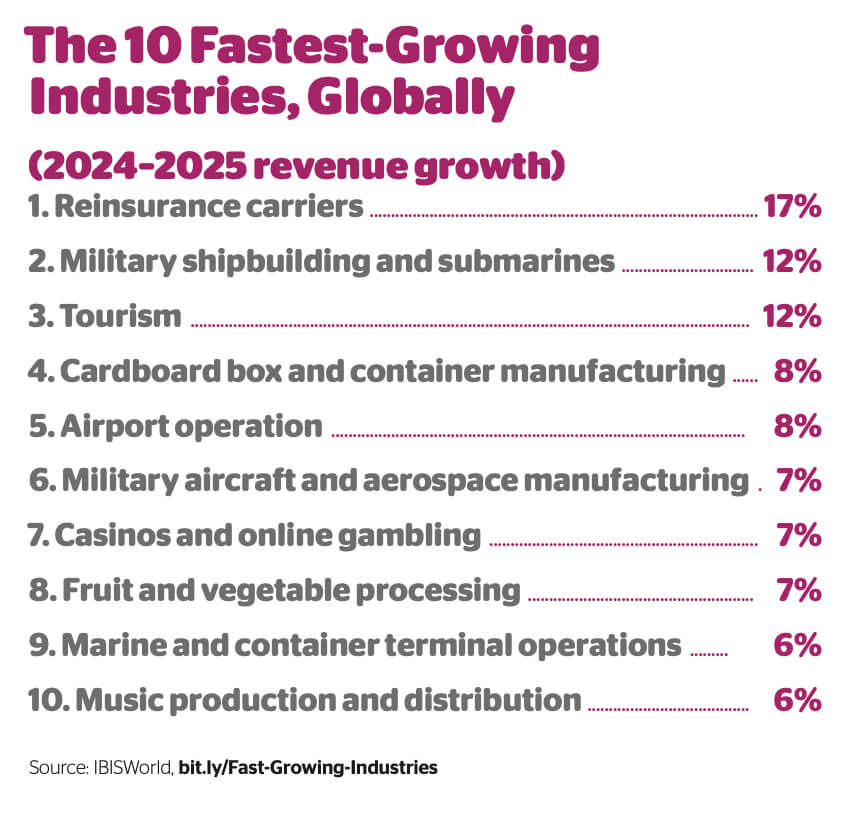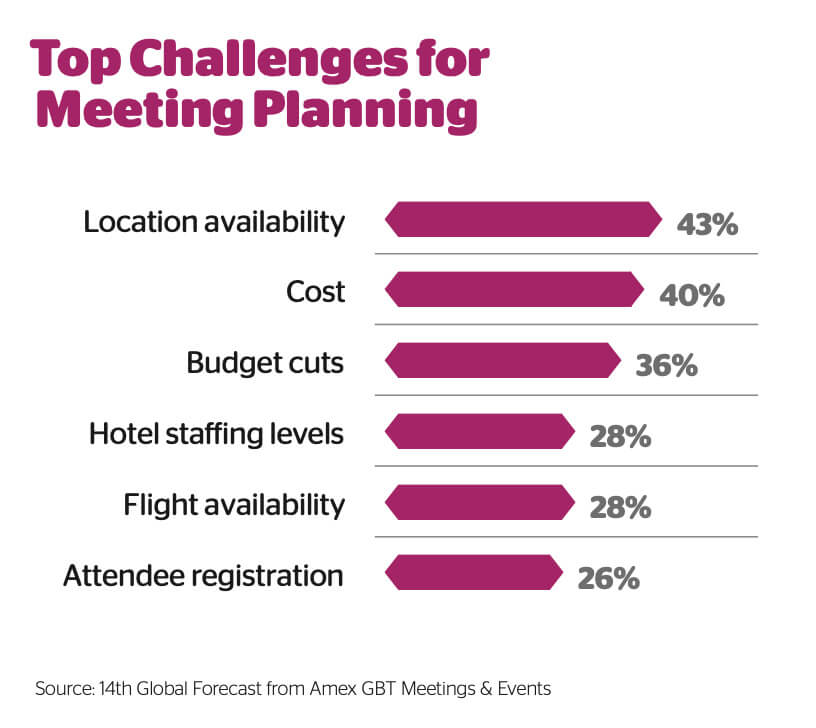
Illustration by Julie Murphy
Annual Events Industry Forecast
Our usual approach to Convene‘s Annual Industry Forecast is to cast a wide net, gathering a variety of data related to the business events industry, including travel, lodging, technology, and the workplace. This year, we took a different tack. Instead of those wide-ranging forecasts, Convene editors wrote succinct trends reports for each sector. We’ve sifted through the research to come up with a few signposts to help you navigate the year ahead, whatever course it takes. And, as always, the Forecast includes our Annual Meetings Market Survey, which gives us a strong sense of where we stand at this moment in time — the ups, the downs, the challenges, and our overall mood.

Participants of the American Geophysical Union’s 2023 Annual Meeting, sitting at the AGU virtual hub in Zurich, Switzerland, follow a presentation broadcast from San Francisco. (Credit: Tuule Müürsepp)
While researching business event trends for 2025, I kept going back to a few phrases I’ve seen over and over again: being intentional, human connection, and meaningful interactions. These sentiments reflect a larger continuing trend in society overall: Coming out of the pandemic, according to global marketing consulting firm Mintel’s 2025 Global Consumer Trends report, consumers have expressed an eagerness to seek connection with purpose. Social groups have become a necessary part, the report adds, of how people plan for the future — given the complexity of big issues facing us, like global warming, it’s “neither logical nor desirable to tackle them alone.”
But consumers — aka attendees — have higher expectations when they gather together. One of the five biggest business trends a Forbes story predicts for 2025 is a focus on customer experience. “Businesses that excel in delivering friction-free, hyper-personalized, and memorable experiences will find they are well-positioned to rise above the competition,” Forbes writes. “Consumers expect businesses to meet them where they are, with service that’s tailored to their needs.” As consumers, meeting attendees are expecting more personalized, intimate, and human-focused gatherings.
This desire is driving a rise in small, highly focused “micro-events” that provide tailored experiences specific to fewer than 50 attendees, according to another Forbes story, offering attendees “a more intimate setting that fosters genuine connections and interactions.” And because these events are local or regional, they reach attendees where they are — resulting in a smaller carbon footprint.
This approach also can be taken in tandem with a larger event. For example, for the American Geophysical Union’s (AGU) 2023 Annual Meeting last December in San Francisco, a virtual hub in Zurich, Switzerland, combined remote presentations and in-person viewing groups to reduce travel while enabling in-person interactions — 68 individuals registered for the event.
Another way organizers can leverage consumer trends is to ensure that their events align with their attendees’ values. Consumers are increasingly purchasing brands that are compatible with their values and priorities. Depending on what consumer marketing survey one reads, anywhere from 60 percent to 85 percent of respondents consider sustainability when they make a purchase, but those brands — and events — must deliver on their promises. According to the Mintel report, consumers are seeking brands that support and elevate their lives on a functional level, “more than vague corporate social responsibility claims that don’t translate to solutions.”
Nearly half of the 519 meeting professionals across North America, Latin America, Europe, and Asia Pacific surveyed for the 14th Global Forecast from Amex GBT Meetings & Events are making good on CSR claims. They are implementing a sustainable meetings and events policy, prioritizing waste management practices, and choosing food and beverage options that are better for the planet.
By focusing on these efforts, events are showing their stakeholders that they are paying attention to what matters to them.
Curt Wagner is digital editor at Convene.





